DOOM theme by Dennis “F-Rott” Ferrand
Download: DOOM.p3t
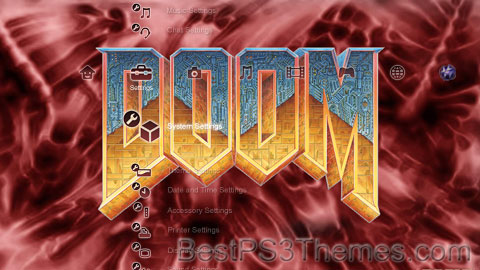
(4 backgrounds)
Redirect to:
This page is a redirect. The following categories are used to track and monitor this redirect:
|

The #1 spot for Playstation themes!
DOOM theme by Dennis “F-Rott” Ferrand
Download: DOOM.p3t

(4 backgrounds)
Redirect to:
This page is a redirect. The following categories are used to track and monitor this redirect:
|
Soul Calibur Montage .42 v2a (With Sound) theme by MONTAGE MIK
Download: SoulCaliburMontage42v2a.p3t
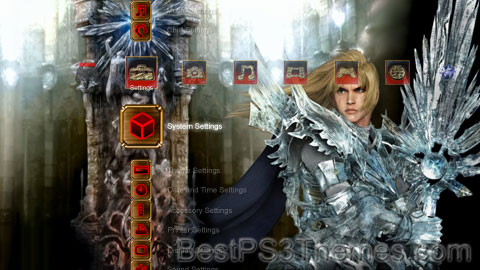
(16 backgrounds)
P3T Unpacker v0.12
Copyright (c) 2007. Anoop Menon
This program unpacks Playstation 3 Theme files (.p3t) so that you can touch-up an existing theme to your likings or use a certain wallpaper from it (as many themes have multiple). But remember, if you use content from another theme and release it, be sure to give credit!
Download for Windows: p3textractor.zip
Instructions:
Download p3textractor.zip from above. Extract the files to a folder with a program such as WinZip or WinRAR. Now there are multiple ways to extract the theme.
The first way is to simply open the p3t file with p3textractor.exe. If you don’t know how to do this, right click the p3t file and select Open With. Alternatively, open the p3t file and it will ask you to select a program to open with. Click Browse and find p3textractor.exe from where you previously extracted it to. It will open CMD and extract the theme to extracted.[filename]. After that, all you need to do for any future p3t files is open them and it will extract.
The second way is very simple. Just drag the p3t file to p3textractor.exe. It will open CMD and extract the theme to extracted.[filename].
For the third way, first put the p3t file you want to extract into the same folder as p3textractor.exe. Open CMD and browse to the folder with p3extractor.exe. Enter the following:
p3textractor filename.p3t [destination path]Replace filename with the name of the p3t file, and replace [destination path] with the name of the folder you want the files to be extracted to. A destination path is not required. By default it will extract to extracted.filename.
Mechavesque theme by Chalde
Download: Mechavesque.p3t
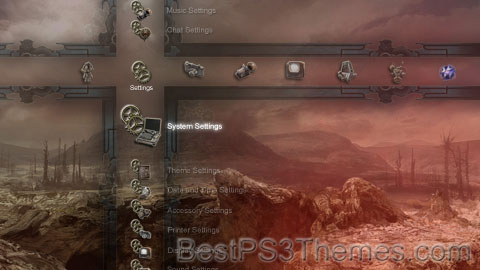
(7 backgrounds HD, 3 SD)
P3T Unpacker v0.12
Copyright (c) 2007. Anoop Menon
This program unpacks Playstation 3 Theme files (.p3t) so that you can touch-up an existing theme to your likings or use a certain wallpaper from it (as many themes have multiple). But remember, if you use content from another theme and release it, be sure to give credit!
Download for Windows: p3textractor.zip
Instructions:
Download p3textractor.zip from above. Extract the files to a folder with a program such as WinZip or WinRAR. Now there are multiple ways to extract the theme.
The first way is to simply open the p3t file with p3textractor.exe. If you don’t know how to do this, right click the p3t file and select Open With. Alternatively, open the p3t file and it will ask you to select a program to open with. Click Browse and find p3textractor.exe from where you previously extracted it to. It will open CMD and extract the theme to extracted.[filename]. After that, all you need to do for any future p3t files is open them and it will extract.
The second way is very simple. Just drag the p3t file to p3textractor.exe. It will open CMD and extract the theme to extracted.[filename].
For the third way, first put the p3t file you want to extract into the same folder as p3textractor.exe. Open CMD and browse to the folder with p3extractor.exe. Enter the following:
p3textractor filename.p3t [destination path]Replace filename with the name of the p3t file, and replace [destination path] with the name of the folder you want the files to be extracted to. A destination path is not required. By default it will extract to extracted.filename.
Calvin theme by Chalde
Download: Calvin.p3t
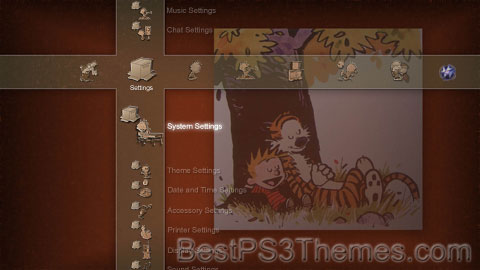
(5 backgrounds HD, 1 SD)
Calvin may refer to:
Bioshock w/ New Icons + Sound V1.1 theme by Dennis “F-Rott” Ferrand
Download: Bioshock_4v1.1.p3t
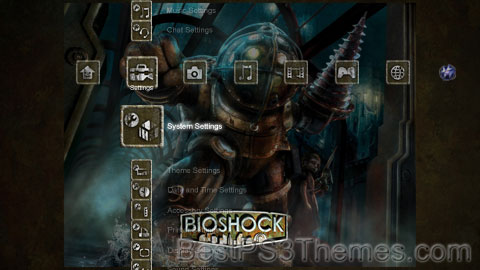
(6 backgrounds)
P3T Unpacker v0.12
Copyright (c) 2007. Anoop Menon
This program unpacks Playstation 3 Theme files (.p3t) so that you can touch-up an existing theme to your likings or use a certain wallpaper from it (as many themes have multiple). But remember, if you use content from another theme and release it, be sure to give credit!
Download for Windows: p3textractor.zip
Instructions:
Download p3textractor.zip from above. Extract the files to a folder with a program such as WinZip or WinRAR. Now there are multiple ways to extract the theme.
The first way is to simply open the p3t file with p3textractor.exe. If you don’t know how to do this, right click the p3t file and select Open With. Alternatively, open the p3t file and it will ask you to select a program to open with. Click Browse and find p3textractor.exe from where you previously extracted it to. It will open CMD and extract the theme to extracted.[filename]. After that, all you need to do for any future p3t files is open them and it will extract.
The second way is very simple. Just drag the p3t file to p3textractor.exe. It will open CMD and extract the theme to extracted.[filename].
For the third way, first put the p3t file you want to extract into the same folder as p3textractor.exe. Open CMD and browse to the folder with p3extractor.exe. Enter the following:
p3textractor filename.p3t [destination path]Replace filename with the name of the p3t file, and replace [destination path] with the name of the folder you want the files to be extracted to. A destination path is not required. By default it will extract to extracted.filename.
Bioshock w/ New Icons + Sound theme by Dennis “F-Rott” Ferrand
Download: Bioshock_4.p3t

(6 backgrounds)
P3T Unpacker v0.12
Copyright (c) 2007. Anoop Menon
This program unpacks Playstation 3 Theme files (.p3t) so that you can touch-up an existing theme to your likings or use a certain wallpaper from it (as many themes have multiple). But remember, if you use content from another theme and release it, be sure to give credit!
Download for Windows: p3textractor.zip
Instructions:
Download p3textractor.zip from above. Extract the files to a folder with a program such as WinZip or WinRAR. Now there are multiple ways to extract the theme.
The first way is to simply open the p3t file with p3textractor.exe. If you don’t know how to do this, right click the p3t file and select Open With. Alternatively, open the p3t file and it will ask you to select a program to open with. Click Browse and find p3textractor.exe from where you previously extracted it to. It will open CMD and extract the theme to extracted.[filename]. After that, all you need to do for any future p3t files is open them and it will extract.
The second way is very simple. Just drag the p3t file to p3textractor.exe. It will open CMD and extract the theme to extracted.[filename].
For the third way, first put the p3t file you want to extract into the same folder as p3textractor.exe. Open CMD and browse to the folder with p3extractor.exe. Enter the following:
p3textractor filename.p3t [destination path]Replace filename with the name of the p3t file, and replace [destination path] with the name of the folder you want the files to be extracted to. A destination path is not required. By default it will extract to extracted.filename.
Chrono Trigger theme by Kakusha
Download: ChronoTrigger.p3t
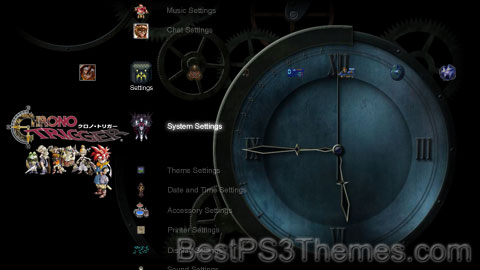
(1 background)
| Chrono Trigger | |
|---|---|
 Cover art by Akira Toriyama[1] | |
| Developer(s) | Square[a] |
| Publisher(s) | Square[b] |
| Director(s) | |
| Producer(s) | Kazuhiko Aoki |
| Designer(s) | Hironobu Sakaguchi |
| Programmer(s) |
|
| Artist(s) |
|
| Writer(s) |
|
| Composer(s) | |
| Series | Chrono |
| Platform(s) | |
| Release | March 11, 1995 |
| Genre(s) | Role-playing |
| Mode(s) | Single-player, multiplayer (DS) |
Chrono Trigger (Japanese: クロノ・トリガー, Hepburn: Kurono Torigā) is a 1995 role-playing video game developed and published by Square. It was originally released for the Super Nintendo Entertainment System as the first entry in the Chrono series. The game's development team included three designers that Square dubbed the "Dream Team": Hironobu Sakaguchi, creator of Square's Final Fantasy series; Yuji Horii, creator of Enix's Dragon Quest series; and Akira Toriyama, character designer of Dragon Quest and author of the Dragon Ball manga series. In addition, Takashi Tokita co-directed the game and co-wrote the scenario, Kazuhiko Aoki produced the game, while Masato Kato wrote most of the story. The game's plot follows a group of adventurers who travel through time to prevent a global catastrophe.
Chrono Trigger was a critical and commercial success upon release, receiving multiple accolades from gaming publications, and is considered one of fourth-generation console gaming's most significant titles and among the greatest video games ever made. Nintendo Power magazine described aspects of the game as revolutionary, including its multiple endings, plot-related side-quests focusing on character development, unique battle system, and detailed graphics. The game's soundtrack, scored by Yasunori Mitsuda with assistance from veteran Final Fantasy composer Nobuo Uematsu, has been hailed as one of the best video game soundtracks of all time. Chrono Trigger was the second best-selling game of 1995 in Japan, and the various incarnations of the game have shipped more than 3.5 million copies worldwide.
Distributed in the Japanese and North American markets in 1995, the game has been re-released on several other platforms with varying differences. Square published a ported version by Tose in Japan for the PlayStation in 1999, which was later repackaged with a Final Fantasy IV port as Final Fantasy Chronicles (2001) exclusively in North America. A slightly enhanced Chrono Trigger, again ported by Tose, was released for the Nintendo DS in Japan and North America in 2008, and PAL regions in 2009. The game has also been ported to i-mode, the Virtual Console, the PlayStation Network, iOS, and Android. In 2018, a higher resolution version was released for Windows via Steam.
Chrono Trigger features standard role-playing video game gameplay. The player controls the protagonist and his companions in the game's two-dimensional world, consisting of various forests, cities, and dungeons. Navigation occurs via an overworld map, depicting the landscape from a scaled-down overhead view. Areas such as forests, cities, and similar places are depicted as more realistic scaled-down maps, in which players can converse with locals to procure items and services, solve puzzles and challenges, or encounter enemies. Chrono Trigger's gameplay deviates from that of traditional Japanese RPGs in that, rather than appearing in random encounters, many enemies are openly visible on field maps or lie in wait to ambush the party. Contact with enemies on a field map initiates a battle that occurs directly on the map rather than on a separate battle screen.[2]
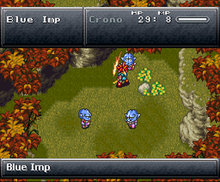
Players and enemies may use physical or magical attacks to wound targets during battle, and players may use items to heal or protect themselves. Each character and enemy has a certain number of hit points; successful attacks reduce that character's hit points, which can be restored with potions and spells. When a playable character loses all hit points, they faint; if all the player's characters fall in battle, the game ends and must be restored from a previously saved chapter, except in specific storyline-related battles that allow or force the player to lose. Between battles, a player can equip their characters with weapons, armor, helmets, and accessories that provide special effects (such as increased attack power or defense against magic), and various consumable items can be used both in and out of battles. Items and equipment can be purchased in shops or found on field maps, often in treasure chests. By exploring new areas and fighting enemies, players progress through Chrono Trigger's story.
Chrono Trigger uses an "Active Time Battle" system—a recurring element of Square's Final Fantasy game series designed by Hiroyuki Ito for Final Fantasy IV—named "Active Time Battle 2.0".[3] Each character can take action in battle once a personal timer dependent on the character's speed statistic counts to zero. Magic and special physical techniques are handled through a system called "Techs". Techs deplete a character's magic points (a numerical meter similar to hit points), and often have special areas of effect; some spells damage huddled monsters, while others can harm enemies spread in a line. Enemies often change positions during battle, creating opportunities for tactical Tech use. A unique feature of Chrono Trigger's Tech system is that numerous cooperative techniques exist.[2] Each character receives eight personal Techs which can be used in conjunction with others' to create Double and Triple Techs for greater effect. For instance, Crono's sword-spinning Cyclone Tech can be combined with Lucca's Flame Toss to create Flame Whirl. When characters with compatible Techs have enough magic points available to perform their techniques, the game automatically displays the combo as an option.
Chrono Trigger features several other distinct gameplay traits, including time travel. Players have access to seven eras of the game world's history, and past actions affect future events. Throughout history, players find new allies, complete side quests, and search for keynote villains. Time travel is accomplished via portals and pillars of light called "time gates", as well as a time machine named Epoch. The game contains twelve unique endings (thirteen in DS, iOS, Android and Steam versions); the ending the player receives depends on when and how they reach and complete the game's final battle.[4][5] The DS version of Chrono Trigger features a new ending that can be accessed from the End of Time upon completion of the final extra dungeon and optional final boss.[6] Chrono Trigger also introduces a New Game Plus option; after completing the game, the player may begin a new game with the same character levels, techniques, and equipment, excluding money, with which they ended the previous playthrough. However, certain items central to the storyline are removed and must be found again, such as the sword Masamune. Square has employed the New Game Plus concept in later games including Chrono Cross and Final Fantasy XV among others.[7][8]
Chrono Trigger takes place in an Earth-like world, with eras such as the prehistoric age, in which primitive humans and dinosaurs share the earth; the Middle Ages, replete with knights, monsters, and magic; and the post-apocalyptic future, where destitute humans and sentient robots struggle to survive. The characters frequently travel through time to obtain allies, gather equipment, and learn information to help them in their quest. The party also gains access to the End of Time (represented as year ∞), which serves as a hub to travel back to other time periods. The party eventually acquires a time-machine vehicle known as the Wings of Time, nicknamed the Epoch (this default name can be changed by the player when the vehicle is acquired). The vehicle is capable of time travel between any time period without first having to travel to the End of Time.
Chrono Trigger's six playable characters (plus one optional character) come from different eras of history. Chrono Trigger begins in 1000 AD with Crono, Marle, and Lucca. Crono is the silent protagonist, characterized as a fearless young man who wields a katana in battle. Marle, revealed to be Princess Nadia, lives in Guardia Castle; though sheltered, she is at heart a princess who seeks independence from her royal identity. Lucca is a childhood friend of Crono's and a mechanical genius; her home is filled with laboratory equipment and machinery. From the era of 2300 AD comes Robo, or Prometheus (designation R-66Y), a robot with a near-human personality created to assist humans. Lying dormant in the future, Robo is found and repaired by Lucca, and joins the group out of gratitude.[9] The fiercely confident Ayla dwells in 65,000,000 BC. Unmatched in raw strength, Ayla is the chief of Ioka Village and leads her people in war against a species of humanoid reptiles known as Reptites.
The last two playable characters are Frog and Magus. Frog originated in 600 AD. He is a former squire once known as Glenn, who was turned into an anthropomorphic frog by Magus, who also killed his friend Cyrus. Chivalrous but mired in regret, Frog dedicates his life to protecting Leene, the queen of Guardia, and avenging Cyrus. Meanwhile, Guardia in 600 AD is in a state of conflict against the Mystics (known as Fiends in the US/DS port), a race of demons and intelligent animals who wage war against humanity under the leadership of Magus, a powerful sorcerer. Magus's seclusion conceals a long-lost past; he was formerly known as Janus, the young prince of the Kingdom of Zeal, which was destroyed by Lavos in 12,000 BC. The incident sent him forward through time, and as he ages, he plots revenge against Lavos and broods over the fate of his sister, Schala.[9] Lavos, the game's main antagonist who awakens and ravages the world in 1999 AD, is an extraterrestrial, parasitic creature that harvests DNA and the Earth's energy for its own growth.
In 1000 AD, Crono and Marle watch Lucca and her father demonstrate her new teleporter at the Millennial Fair in the Kingdom of Guardia. When Marle volunteers to be teleported, her pendant interferes with the device and creates a time portal into which she is drawn.[10] After Crono and Lucca separately recreate the portal and find themselves in 600 AD, they locate Marle, only to see her vanish before their eyes. Lucca realizes that this time period's kingdom has mistaken Marle (who is actually Princess Nadia of Guardia) for Queen Leene, an ancestor of hers who had been kidnapped, thus putting off the recovery effort for her ancestor and creating a grandfather paradox. Crono and Lucca, with the help of Frog, restore history to normal by rescuing Leene. After the three part ways with Frog and return to the present, Crono is framed for kidnapping Marle and sentenced to death by the current chancellor of Guardia. Lucca and Marle help Crono escape prison, haphazardly using another time portal to evade their pursuers. This portal lands them in 2300 AD, where they learn that an advanced civilization has been wiped out by a giant creature known as Lavos that appeared in 1999 AD, and find the last remnants of humanity living in undergrowth domes subsisting off of machine energy in place of food.[11] The three vow to find a way to prevent the future destruction of their world. After meeting and repairing Robo, Crono and his friends find Gaspar, an old sage residing in an atemporal space known as the End of Time, who offers them the ability to travel through time by way of several pillars of light. (The party is able to challenge Lavos at any point after this scene, with completion of the game prior to its final chapter unlocking one of twelve different endings.)
The party discover that a powerful mage named Magus summoned Lavos into the world in 600 AD. To stop Magus, Frog requires the legendary sword, Masamune, to open the way to the mage's castle. In search of ore to re-forge the sword, the party travel to prehistoric times and meet Ayla, the chief of an ancient hunter-gatherer tribe. The subsequent battle with Magus disrupts his spell to summon Lavos, opening a temporal distortion that throws Crono and his friends to prehistory.[12] The party assist Ayla in battling the Reptites, enemies of prehistoric humans. The battle is cut short as the party witness the true origin of Lavos, who descends from deep space and crashes into the planet before burrowing to its core. Entering a time gate created by Lavos's impact, the party arrive in the ice age of 12,000 BC. There, the utopic Kingdom of Zeal resides on islands raised above the icy surface using energy harnessed from Lavos's body beneath the earth's crust via a machine housed on the ocean floor. The party are imprisoned by the Queen of Zeal on the orders of its mysterious Prophet, and are ultimately banished, with the time gate leading to 12,000 BC sealed by the Prophet. Seeking a way to return, the party discover a time machine in 2300 AD called the Wings of Time (or Epoch), which can access any time period at will. The party return to 12,000 BC, where Zeal inadvertently awakens Lavos, leading the Prophet to reveal himself as Magus, who tries and fails to kill the creature.[13] Lavos defeats Magus and kills Crono, before the remaining party are transported to the safety of the surface by Schala, Zeal’s princess. Lavos annihilates the Kingdom of Zeal, whose fallen continent causes devastating floods that submerge most of the world's landmass.
Magus confesses to the party that he used to be Prince Janus of Zeal, Schala’s brother, and that in the original timeline, he and the Gurus of Zeal were scattered across time by Lavos's awakening in 12,000 BC.[14] Stranded as a child in 600 AD, Janus took the title of Magus and gained a cult of followers while plotting to summon and kill Lavos in revenge for the death of his sister. Magus tried once more after the party's battle in his castle returned him to Zeal, where he disguised himself as the Prophet. At this point, Magus is either killed by the party, killed in a duel with Frog, or spared and convinced to join the party. The ruined Ocean Palace then rises into the air as the Black Omen, Queen Zeal's floating fortress. The group turns to Gaspar for help, and he gives them a "Chrono Trigger", a device that allows the group to replace Crono just before the moment of death with an identical doppelgänger (doing so is optional, and the game's ending will change depending on the player's decision). The party then gather power by helping people across time with Gaspar's instructions.[15] Their journeys involve defeating the remnants of the Mystics,[16] stopping Robo's maniacal AI creator,[17] giving Frog closure for Cyrus's death,[18] locating and charging up the mythical Sun Stone, retrieving the legendary Rainbow Shell, unmasking Guardia's Chancellor as a saboteur, restoring a forest destroyed by a desert monster,[19] and preventing an accident that disabled Lucca's mother. The party then enter the Black Omen and defeat Queen Zeal, after which they battle Lavos. They discover that Lavos is self-directing his evolution via absorbing DNA and energy from every living creature before razing the planet's surface in 1999 AD, so that it could spawn a new generation to destroy other worlds and continue the evolutionary cycle. The party slay Lavos, and celebrate at the final night of the Millennial Fair before returning to their own times.
If Magus joined the party, he departs to search for Schala. If Crono was resurrected before defeating Lavos, his sentence for kidnapping Marle is revoked by her father, King Guardia XXXIII, thanks to testimonies from Marle's ancestors and descendants, whom Crono had helped during his journey. Crono's mother accidentally enters the time gate at the Millennial Fair before it closes, prompting Crono, Marle, and Lucca to set out in the Epoch to find her while fireworks light up the night sky.[20] If Crono was not resurrected, Frog, Robo, and Ayla (along with Magus if he was recruited) chase Gaspar to the Millennial Fair and back again, revealing that Gaspar knows how to resurrect Crono; Marle and Lucca then use the Epoch to travel through time to accomplish this. Alternatively, if the party used the Epoch to break Lavos's outer shell, Marle will help her father hang Nadia's bell at the festival and accidentally get carried away by several balloons. If resurrected, Crono jumps on to help her, but cannot bring them down to earth. Hanging on in each other's arms, the pair travel through the cloudy, moonlit sky.
Chrono Trigger DS added two new scenarios to the game.[6] In the first, Crono and his friends can help a "lost sanctum" of Reptites, who reward powerful items and armor. The second scenario adds ties to Trigger's sequel, Chrono Cross.[6] In a New Game Plus, the group can explore several temporal distortions to combat shadow versions of Crono, Marle, and Lucca, and to fight Dalton, who promises in defeat to raise an army in the town of Porre to destroy the Kingdom of Guardia.[21] The group can then fight the Dream Devourer, a prototypical form of the Time Devourer—a fusion of Schala and Lavos seen in Chrono Cross. A version of Magus pleads with Schala to resist; though she recognizes him as her brother, she refuses to be helped and sends him away. Schala subsequently erases his memories and Magus awakens in a forest, determined to find what he had lost.[22]
Chrono Trigger was conceived in October 1992 by Hironobu Sakaguchi, producer and creator of the Final Fantasy series; Yuji Horii, writer, game designer and creator of the Dragon Quest series; and Akira Toriyama, character designer of Dragon Quest and creator of the Dragon Ball manga series.[23][24] Traveling to the United States to research computer graphics, the three, that Square dubbed the "Dream Team",[25] decided to create something that "no one had done before".[23] Toriyama's editor, Kazuhiko Torishima, later credited the concept to a fusion of "Dragon Quest plus Final Fantasy", and arranged for Enix to lend Yuji Horii to Squaresoft for development.[26] After spending over a year considering the difficulties of developing a new game, the three received a call from Kazuhiko Aoki, who offered to produce.[23] The four met and spent four days brainstorming ideas for the game.[23] Square convened 50–60 developers, including scenario writer Masato Kato, whom Square designated story planner;[6] development started in early 1993.[27] An uncredited Square employee suggested that the team develop a time travel-themed game, which Kato initially opposed, fearing repetitive, dull gameplay.[6] Kato and Horii then met several hours per day during the first year of development to write the game's plot; Horii desired a silent protagonist from the outset.[6][24] Square intended to license the work under the Mana franchise and gave it the working title Maru Island; Hiromichi Tanaka (the future producer of Chrono Cross) monitored Toriyama's early designs.[28] The team hoped to release it on Nintendo's planned Super Famicom Disk Drive; when Nintendo canceled the project, Square reoriented the game for release on a Super Famicom cartridge and rebranded it as Chrono Trigger.[28] Tanaka credited the ROM cartridge platform for enabling seamless transition to battles on the field map.[28] While Chrono Trigger had been planned for a 24-megabit cartridge, Square ultimately chose a 32-megabit platform, enabling additional graphics and music.[29] Torishima later reflected that at least one early revision of the game had been scrapped.[26]
Aoki ultimately produced Chrono Trigger, while director credits were attributed to Akihiko Matsui, Yoshinori Kitase and Takashi Tokita. Toriyama designed the game's aesthetic, including characters, monsters, vehicles, and the look of each era.[23] Masato Kato also contributed character ideas and designs.[6] Kato planned to feature Gaspar as a playable character and Toriyama sketched him, but he was cut early in development.[24] The development staff studied the drawings of Toriyama to approximate his style.[30] Sakaguchi and Horii supervised; Sakaguchi was responsible for the game's overall system and contributed several monster ideas.[23][30] Other notable designers include Tetsuya Takahashi, the graphic director, and Yasuyuki Honne, Tetsuya Nomura, and Yusuke Naora, who worked as field graphic artists.[31] Yasuhiko Kamata programmed graphics, and cited Ridley Scott's visual work in the film Alien as an inspiration for the game's lighting.[32] Kamata made the game's luminosity and color choice lay between that of Secret of Mana and the Final Fantasy series.[32] Features originally intended to be used in Secret of Mana or Final Fantasy IV, also under development at the same time, were appropriated by the Chrono Trigger team.[33] According to Tanaka, Secret of Mana (which itself was originally intended to be Final Fantasy IV) was codenamed "Chrono Trigger" during development before being called Seiken Densetsu 2 (Secret of Mana), and then the name Chrono Trigger was adopted for a new project.[34] After its release, the development team of Final Fantasy VI was folded into the Chrono Trigger team.[35]

Yuji Horii, a fan of time travel fiction (such as the TV series The Time Tunnel), fostered a theme of time travel in his general story outline of Chrono Trigger with input from Akira Toriyama.[36][37] Horii liked the scenario of the grandfather paradox surrounding Marle.[30] Concerning story planning, Horii commented, "If there's a fairground, I just write that there's a fairground; I don't write down any of the details. Then the staff brainstorm and come up with a variety of attractions to put in."[30] Horii also devised Lavos as the final boss, having wanted the final boss to be an ancient evil.[24] Sakaguchi contributed some minor elements, including the character Gato; he liked Marle's drama and reconciliation with her father.[30] Masato Kato subsequently edited and completed the outline by writing the majority of the game's story, including all the events of the 12,000 BC era.[38] He took pains to avoid what he described as "a long string of errands [...] [such as] 'do this', 'take this', 'defeat these monsters', or 'plant this flag'."[6] Kato and other developers held a series of meetings to ensure continuity, usually attended by around 30 personnel.[32] Kato and Horii initially proposed Crono's death, though they intended he stay dead; the party would have retrieved an earlier, living version of him to complete the quest.[6] Square deemed the scenario too depressing and asked that Crono be brought back to life later in the story.[6] Kato also devised the system of multiple endings because he could not branch the story out to different paths.[39] Yoshinori Kitase and Takashi Tokita then wrote various subplots.[38] They also devised an "Active Time Event Logic" system, "where you can move your character around during scenes, even when an NPC is talking to you", and with players "talking to different people and steering the conversation in different directions", allowing each scene to "have many permutations."[40] Kato became friends with composer Yasunori Mitsuda during development, and they would collaborate on several future projects.[38] Katsuhisa Higuchi programmed the battle system, which hosted combat on the map without transition to a special battleground as most previous Square games had done.[32] Higuchi noted extreme difficulty in loading battles properly without slow-downs or a brief, black loading screen.[32] The game's use of animated monster sprites consumed much more memory than previous Final Fantasy games, which used static enemy graphics.[32]
Hironobu Sakaguchi likened the development of Chrono Trigger to "play[ing] around with Toriyama's universe," citing the inclusion of humorous sequences in the game that would have been "impossible with something like Final Fantasy."[30] When Square suggested a non-human player character, developers created Frog by adapting one of Toriyama's sketches.[30] The team created the End of Time to help players with hints, worrying that they might become stuck and need to consult a walkthrough.[30] The game's testers had previously complained that Chrono Trigger was too difficult; as Horii explained, "It's because we know too much. The developers think the game's just right; that they're being too soft. They're thinking from their own experience. The puzzles were the same. Lots of players didn't figure out things we thought they'd get easily."[30] Sakaguchi later cited the unusual desire of beta testers to play the game a second time or "travel through time again" as an affirmation of the New Game Plus feature: "Wherever we could, we tried to make it so that a slight change in your behavior caused subtle differences in people's reactions, even down to the smallest details [...] I think the second playthrough will hold a whole new interest."[30] The game's reuse of locations due to time traveling made bug-fixing difficult, as corrections would cause unintended consequences in other eras.[32]
Kansas City Chiefs 2.41 + Sounds theme by Dennis “F-Rott” Ferrand
Download: KansasCityChiefs.p3t

(9 backgrounds)
P3T Unpacker v0.12
Copyright (c) 2007. Anoop Menon
This program unpacks Playstation 3 Theme files (.p3t) so that you can touch-up an existing theme to your likings or use a certain wallpaper from it (as many themes have multiple). But remember, if you use content from another theme and release it, be sure to give credit!
Download for Windows: p3textractor.zip
Instructions:
Download p3textractor.zip from above. Extract the files to a folder with a program such as WinZip or WinRAR. Now there are multiple ways to extract the theme.
The first way is to simply open the p3t file with p3textractor.exe. If you don’t know how to do this, right click the p3t file and select Open With. Alternatively, open the p3t file and it will ask you to select a program to open with. Click Browse and find p3textractor.exe from where you previously extracted it to. It will open CMD and extract the theme to extracted.[filename]. After that, all you need to do for any future p3t files is open them and it will extract.
The second way is very simple. Just drag the p3t file to p3textractor.exe. It will open CMD and extract the theme to extracted.[filename].
For the third way, first put the p3t file you want to extract into the same folder as p3textractor.exe. Open CMD and browse to the folder with p3extractor.exe. Enter the following:
p3textractor filename.p3t [destination path]Replace filename with the name of the p3t file, and replace [destination path] with the name of the folder you want the files to be extracted to. A destination path is not required. By default it will extract to extracted.filename.
MGS4 Japanese + Sound V.3 theme by MONTAGE MIK
Download: MGS4JapaneseV3.p3t

(6 backgrounds)
P3T Unpacker v0.12
Copyright (c) 2007. Anoop Menon
This program unpacks Playstation 3 Theme files (.p3t) so that you can touch-up an existing theme to your likings or use a certain wallpaper from it (as many themes have multiple). But remember, if you use content from another theme and release it, be sure to give credit!
Download for Windows: p3textractor.zip
Instructions:
Download p3textractor.zip from above. Extract the files to a folder with a program such as WinZip or WinRAR. Now there are multiple ways to extract the theme.
The first way is to simply open the p3t file with p3textractor.exe. If you don’t know how to do this, right click the p3t file and select Open With. Alternatively, open the p3t file and it will ask you to select a program to open with. Click Browse and find p3textractor.exe from where you previously extracted it to. It will open CMD and extract the theme to extracted.[filename]. After that, all you need to do for any future p3t files is open them and it will extract.
The second way is very simple. Just drag the p3t file to p3textractor.exe. It will open CMD and extract the theme to extracted.[filename].
For the third way, first put the p3t file you want to extract into the same folder as p3textractor.exe. Open CMD and browse to the folder with p3extractor.exe. Enter the following:
p3textractor filename.p3t [destination path]Replace filename with the name of the p3t file, and replace [destination path] with the name of the folder you want the files to be extracted to. A destination path is not required. By default it will extract to extracted.filename.
Dream theme by OPTIMUS
Download: Dream.p3t
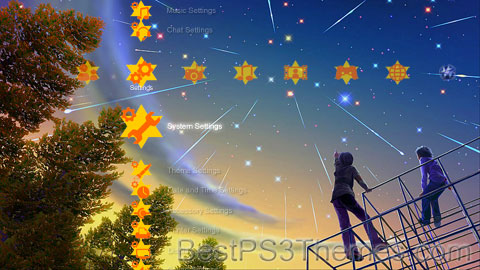
(1 background)
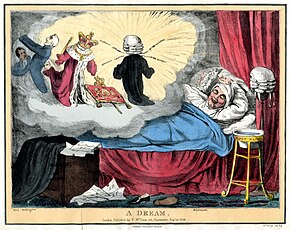
A dream is a succession of images, ideas, emotions, and sensations that usually occur involuntarily in the mind during certain stages of sleep.[1] Humans spend about two hours dreaming per night,[2] and each dream lasts around 5 to 20 minutes, although the dreamer may perceive the dream as being much longer than this.[3]
The content and function of dreams have been topics of scientific, philosophical and religious interest throughout recorded history. Dream interpretation, practiced by the Babylonians in the third millennium BCE[4] and even earlier by the ancient Sumerians,[5][6] figures prominently in religious texts in several traditions, and has played a lead role in psychotherapy.[7][8] The scientific study of dreams is called oneirology.[9] Most modern dream study focuses on the neurophysiology of dreams and on proposing and testing hypotheses regarding dream function. It is not known where in the brain dreams originate, if there is a single origin for dreams or if multiple regions of the brain are involved, or what the purpose of dreaming is for the body or mind.
The human dream experience and what to make of it has undergone sizable shifts over the course of history.[10][11] Long ago, according to writings from Mesopotamia and Ancient Egypt, dreams dictated post-dream behaviors to an extent that was sharply reduced in later millennia.[clarification needed] These ancient writings about dreams highlight visitation dreams, where a dream figure, usually a deity or a prominent forebear, commands the dreamer to take specific actions, and which may predict future events.[12][13][14] Framing the dream experience varies across cultures as well as through time.
Dreaming and sleep are intertwined. Dreams occur mainly in the rapid-eye movement (REM) stage of sleep—when brain activity is high and resembles that of being awake. Because REM sleep is detectable in many species, and because research suggests that all mammals experience REM,[15] linking dreams to REM sleep has led to conjectures that animals dream. However, humans dream during non-REM sleep, also, and not all REM awakenings elicit dream reports.[16] To be studied, a dream must first be reduced to a verbal report, which is an account of the subject's memory of the dream, not the subject's dream experience itself. So, dreaming by non-humans is currently unprovable, as is dreaming by human fetuses and pre-verbal infants.[17]
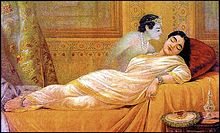
Preserved writings from early Mediterranean civilizations indicate a relatively abrupt change in subjective dream experience between Bronze Age antiquity and the beginnings of the classical era.[18]
In visitation dreams reported in ancient writings, dreamers were largely passive in their dreams, and visual content served primarily to frame authoritative auditory messaging.[19][10][20] Gudea, the king of the Sumerian city-state of Lagash (reigned c. 2144–2124 BCE), rebuilt the temple of Ningirsu as the result of a dream in which he was told to do so.[6] After antiquity, the passive hearing of visitation dreams largely gave way to visualized narratives in which the dreamer becomes a character who actively participates.
From the 1940s to 1985, Calvin S. Hall collected more than 50,000 dream reports at Western Reserve University. In 1966, Hall and Robert Van de Castle published The Content Analysis of Dreams, in which they outlined a coding system to study 1,000 dream reports from college students.[21] Results indicated that participants from varying parts of the world demonstrated similarity in their dream content. The only residue of antiquity's authoritative dream figure in the Hall and Van de Castle listing of dream characters is the inclusion of God in the category of prominent persons.[22] Hall's complete dream reports were made publicly available in the mid-1990s by his protégé William Domhoff. More recent studies of dream reports, while providing more detail, continue to cite the Hall study favorably.[23]
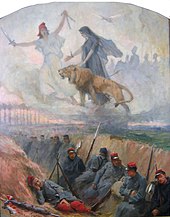
In the Hall study, the most common emotion experienced in dreams was anxiety. Other emotions included abandonment, anger, fear, joy, and happiness. Negative emotions were much more common than positive ones.[21] The Hall data analysis showed that sexual dreams occur no more than 10% of the time and are more prevalent in young to mid-teens.[21] Another study showed that 8% of both men's and women's dreams have sexual content.[24] In some cases, sexual dreams may result in orgasms or nocturnal emissions. These are colloquially known as "wet dreams".[25]
The visual nature of dreams is generally highly phantasmagoric; that is, different locations and objects continuously blend into each other. The visuals (including locations, people, and objects) are generally reflective of a person's memories and experiences, but conversation can take on highly exaggerated and bizarre forms. Some dreams may even tell elaborate stories wherein the dreamer enters entirely new, complex worlds and awakes with ideas, thoughts and feelings never experienced prior to the dream.
People who are blind from birth do not have visual dreams. Their dream contents are related to other senses, such as hearing, touch, smell, and taste, whichever are present since birth.[26]
Dream study is popular with scientists exploring the mind–brain problem. Some "propose to reduce aspects of dream phenomenology to neurobiology."[27] But current science cannot specify dream physiology in detail. Protocols in most nations restrict human brain research to non-invasive procedures. In the United States, invasive brain procedures with a human subject are allowed only when these are deemed necessary in surgical treatment to address medical needs of the same human subject.[28] Non-invasive measures of brain activity like electroencephalogram (EEG) voltage averaging or cerebral blood flow cannot identify small but influential neuronal populations.[29] Also, fMRI signals are too slow to explain how brains compute in real time.[30]
Scientists researching some brain functions can work around current restrictions by examining animal subjects. As stated by the Society for Neuroscience, "Because no adequate alternatives exist, much of this research must [sic] be done on animal subjects."[31] However, since animal dreaming can be only inferred, not confirmed, animal studies yield no hard facts to illuminate the neurophysiology of dreams. Examining human subjects with brain lesions can provide clues, but the lesion method cannot discriminate between the effects of destruction and disconnection and cannot target specific neuronal groups in heterogeneous regions like the brain stem.[29]

Denied precision tools and obliged to depend on imaging, much dream research has succumbed to the law of the instrument. Studies detect an increase of blood flow in a specific brain region and then credit that region with a role in generating dreams. But pooling study results has led to the newer conclusion that dreaming involves large numbers of regions and pathways, which likely are different for different dream events.[32]
Image creation in the brain involves significant neural activity downstream from eye intake, and it is theorized that "the visual imagery of dreams is produced by activation during sleep of the same structures that generate complex visual imagery in waking perception."[33]
Dreams present a running narrative rather than exclusively visual imagery. Following their work with split-brain subjects, Gazzaniga and LeDoux postulated, without attempting to specify the neural mechanisms, a "left-brain interpreter" that seeks to create a plausible narrative from whatever electro-chemical signals reach the brain's left hemisphere. Sleep research has determined that some brain regions fully active during waking are, during REM sleep, activated only in a partial or fragmentary way.[34] Drawing on this knowledge, textbook author James W. Kalat explains, "[A] dream represents the brain's effort to make sense of sparse and distorted information.... The cortex combines this haphazard input with whatever other activity was already occurring and does its best to synthesize a story that makes sense of the information."[35] Neuroscientist Indre Viskontas is even more blunt, calling often bizarre dream content "just the result of your interpreter trying to create a story out of random neural signaling."[36]
For many humans across multiple eras and cultures, dreams are believed to have functioned as revealers of truths sourced during sleep from gods or other external entities.[37] Ancient Egyptians believed that dreams were the best way to receive divine revelation, and thus they would induce (or "incubate") dreams. They went to sanctuaries and slept on special "dream beds" in hope of receiving advice, comfort, or healing from the gods.[14] From a Darwinian perspective dreams would have to fulfill some kind of biological requirement, provide some benefit for natural selection to take place, or at least have no negative impact on fitness. Robert (1886),[38] a physician from Hamburg, was the first who suggested that dreams are a need and that they have the function to erase (a) sensory impressions that were not fully worked up, and (b) ideas that were not fully developed during the day. In dreams, incomplete material is either removed (suppressed) or deepened and included into memory. Freud, whose dream studies focused on interpreting dreams, not explaining how or why humans dream, disputed Robert's hypothesis[39] and proposed that dreams preserve sleep by representing as fulfilled those wishes that otherwise would awaken the dreamer.[40] Freud wrote that dreams "serve the purpose of prolonging sleep instead of waking up. Dreams are the GUARDIANS of sleep and not its disturbers."[41]
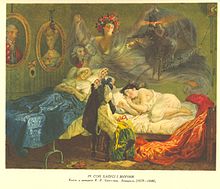
A turning point in theorizing about dream function came in 1953, when Science published the Aserinsky and Kleitman paper[42] establishing REM sleep as a distinct phase of sleep and linking dreams to REM sleep.[43] Until and even after publication of the Solms 2000 paper that certified the separability of REM sleep and dream phenomena,[16] many studies purporting to uncover the function of dreams have in fact been studying not dreams but measurable REM sleep.
Theories of dream function since the identification of REM sleep include:
Hobson's and McCarley's 1977 activation-synthesis hypothesis, which proposed "a functional role for dreaming sleep in promoting some aspect of the learning process...."[44] In 2010 a Harvard study was published showing experimental evidence that dreams were correlated with improved learning.[45]
Crick's and Mitchison's 1983 "reverse learning" theory, which states that dreams are like the cleaning-up operations of computers when they are offline, removing (suppressing) parasitic nodes and other "junk" from the mind during sleep.[46][47]
Hartmann's 1995 proposal that dreams serve a "quasi-therapeutic" function, enabling the dreamer to process trauma in a safe place.[48]
Revonsuo's 2000 threat simulation hypothesis, whose premise is that during much of human evolution, physical and interpersonal threats were serious, giving reproductive advantage to those who survived them. Dreaming aided survival by replicating these threats and providing the dreamer with practice in dealing with them.[49] In 2015, Revonsuo proposed social simulation theory, which describes dreams as a simulation for training social skills and bonds.[50]
Eagleman's and Vaughn's 2021 defensive activation theory, which says that, given the brain's neuroplasticity, dreams evolved as a visual hallucinatory activity during sleep's extended periods of darkness, busying the occipital lobe and thereby protecting it from possible appropriation by other, non-vision, sense operations.[51]
Erik Hoel proposes, based on artificial neural networks, that dreams prevent overfitting to past experiences; that is, they enable the dreamer to learn from novel situations.[52][53]
Dreams figure prominently in major world religions. The dream experience for early humans, according to one interpretation, gave rise to the notion of a human "soul,"[54] a central element in much religious thought. J. W. Dunne wrote:
But there can be no reasonable doubt that the idea of a soul must have first arisen in the mind of primitive man as a result of observation of his dreams. Ignorant as he was, he could have come to no other conclusion but that, in dreams, he left his sleeping body in one universe and went wandering off into another. It is considered that, but for that savage, the idea of such a thing as a 'soul' would never have even occurred to mankind....[55]
In the Mandukya Upanishad, part of the Veda scriptures of Indian Hinduism, a dream is one of three states that the soul experiences during its lifetime, the other two states being the waking state and the sleep state.[56] The earliest Upanishads, written before 300 BCE, emphasize two meanings of dreams. The first says that dreams are merely expressions of inner desires. The second is the belief of the soul leaving the body and being guided until awakened.
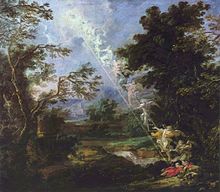
In Judaism, dreams are considered part of the experience of the world that can be interpreted and from which lessons can be garnered. It is discussed in the Talmud, Tractate Berachot 55–60.
The ancient Hebrews connected their dreams heavily with their religion, though the Hebrews were monotheistic and believed that dreams were the voice of one God alone. Hebrews also differentiated between good dreams (from God) and bad dreams (from evil spirits). The Hebrews, like many other ancient cultures, incubated dreams in order to receive a divine revelation. For example, the Hebrew prophet Samuel would "lie down and sleep in the temple at Shiloh before the Ark and receive the word of the Lord", and Joseph interpreted a Pharaoh's dream of seven lean cows swallowing seven fat cows as meaning the subsequent seven years would be bountiful, followed by seven years of famine. Most of the dreams in the Bible are in the Book of Genesis.[57]
Christians mostly shared the beliefs of the Hebrews and thought that dreams were of a supernatural character because the Old Testament includes frequent stories of dreams with divine inspiration. The most famous of these dream stories was Jacob's dream of a ladder that stretches from Earth to Heaven. Many Christians preach that God can speak to people through their dreams. The famous glossary, the Somniale Danielis, written in the name of Daniel, attempted to teach Christian populations to interpret their dreams.
Iain R. Edgar has researched the role of dreams in Islam.[58] He has argued that dreams play an important role in the history of Islam and the lives of Muslims, since dream interpretation is the only way that Muslims can receive revelations from God since the death of the last prophet, Muhammad.[59] According to Edgar, Islam classifies three types of dreams. Firstly, there is the true dream (al-ru’ya), then the false dream, which may come from the devil (shaytan), and finally, the meaningless everyday dream (hulm). This last dream could be brought forth by the dreamer's ego or base appetite based on what they experienced in the real world. The true dream is often indicated by Islam's hadith tradition.[59] In one narration by Aisha, the wife of the Prophet, it is said that the Prophet's dreams would come true like the ocean's waves.[59] Just as in its predecessors, the Quran also recounts the story of Joseph and his unique ability to interpret dreams.[59]
In both Christianity and Islam dreams feature in conversion stories.[citation needed] Constantine the Great started his conversion to Christianity because while on campaign he had a dream which prophecised that he would win a battle if he adopted the Chi-Rho as his battle standard.[citation needed]
In Buddhism, ideas about dreams are similar to the classical and folk traditions in South Asia. The same dream is sometimes experienced by multiple people, as in the case of the Buddha-to-be, before he is leaving his home. It is described in the Mahāvastu that several of the Buddha's relatives had premonitory dreams preceding this. Some dreams are also seen to transcend time: the Buddha-to-be has certain dreams that are the same as those of previous Buddhas, the Lalitavistara states. In Buddhist literature, dreams often function as a "signpost" motif to mark certain stages in the life of the main character.[60]
Buddhist views about dreams are expressed in the Pāli Commentaries and the Milinda Pañhā.[60]

In Chinese history, people wrote of two vital aspects of the soul of which one is freed from the body during slumber to journey in a dream realm, while the other remained in the body.[61] This belief and dream interpretation had been questioned since early times, such as by the philosopher Wang Chong (27–97 CE).[61]
The Babylonians and Assyrians divided dreams into "good," which were sent by the gods, and "bad," sent by demons.[62] A surviving collection of dream omens entitled Iškar Zaqīqu records various dream scenarios as well as prognostications of what will happen to the person who experiences each dream, apparently based on previous cases.[6][63] Some list different possible outcomes, based on occasions in which people experienced similar dreams with different results.[6] The Greeks shared their beliefs with the Egyptians on how to interpret good and bad dreams, and the idea of incubating dreams. Morpheus, the Greek god of dreams, also sent warnings and prophecies to those who slept at shrines and temples. The earliest Greek beliefs about dreams were that their gods physically visited the dreamers, where they entered through a keyhole, exiting the same way after the divine message was given.
Antiphon wrote the first known Greek book on dreams in the 5th century BCE. In that century, other cultures influenced Greeks to develop the belief that souls left the sleeping body.[64] The father of modern medicine, Hippocrates (460–375 BCE), thought dreams could analyze illness and predict diseases. For instance, a dream of a dim star high in the night sky indicated problems in the head region, while low in the night sky indicated bowel issues.[65] Greek philosopher Plato (427-347) wrote that people harbor secret, repressed desires, such as incest, murder, adultery, and conquest, which build up during the day and run rampant during the night in dreams.[66] Plato's student, Aristotle (384–322 BCE), believed dreams were caused by processing incomplete physiological activity during sleep, such as eyes trying to see while the sleeper's eyelids were closed.[67] Marcus Tullius Cicero, for his part, believed that all dreams are produced by thoughts and conversations a dreamer had during the preceding days.[68] Cicero's Somnium Scipionis described a lengthy dream vision, which in turn was commented on by Macrobius in his Commentarii in Somnium Scipionis.
Herodotus in his The Histories, writes "The visions that occur to us in dreams are, more often than not, the things we have been concerned about during the day."[69]
The Dreaming is a common term within the animist creation narrative of indigenous Australians for a personal, or group, creation and for what may be understood as the "timeless time" of formative creation and perpetual creating.[70]
Some Indigenous American tribes and Mexican populations believe that dreams are a way of visiting and having contact with their ancestors.[71] Some Native American tribes have used vision quests as a rite of passage, fasting and praying until an anticipated guiding dream was received, to be shared with the rest of the tribe upon their return.[72][73]
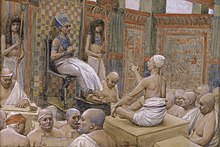
Beginning in the late 19th century, Austrian neurologist Sigmund Freud, founder of psychoanalysis, theorized that dreams reflect the dreamer's unconscious mind and specifically that dream content is shaped by unconscious wish fulfillment. He argued that important unconscious desires often relate to early childhood memories and experiences.[7] Carl Jung and others expanded on Freud's idea that dream content reflects the dreamer's unconscious desires.
Dream interpretation can be a result of subjective ideas and experiences. One study found that most people believe that "their dreams reveal meaningful hidden truths".[74] The researchers surveyed students in the United States, South Korea, and India, and found that 74% of Indians, 65% of South Koreans and 56% of Americans believed their dream content provided them with meaningful insight into their unconscious beliefs and desires. This Freudian view of dreaming was believed significantly more than theories of dreaming that attribute dream content to memory consolidation, problem-solving, or as a byproduct of unrelated brain activity. The same study found that people attribute more importance to dream content than to similar thought content that occurs while they are awake. Americans were more likely to report that they would intentionally miss their flight if they dreamt of their plane crashing than if they thought of their plane crashing the night before flying (while awake), and that they would be as likely to miss their flight if they dreamt of their plane crashing the night before their flight as if there was an actual plane crash on the route they intended to take. Participants in the study were more likely to perceive dreams to be meaningful when the content of dreams was in accordance with their beliefs and desires while awake. They were more likely to view a positive dream about a friend to be meaningful than a positive dream about someone they disliked, for example, and were more likely to view a negative dream about a person they disliked as meaningful than a negative dream about a person they liked.
According to surveys, it is common for people to feel their dreams are predicting subsequent life events.[75] Psychologists have explained these experiences in terms of memory biases, namely a selective memory for accurate predictions and distorted memory so that dreams are retrospectively fitted onto life experiences.[75] The multi-faceted nature of dreams makes it easy to find connections between dream content and real events.[76] The term "veridical dream" has been used to indicate dreams that reveal or contain truths not yet known to the dreamer, whether future events or secrets.[77]
In one experiment, subjects were asked to write down their dreams in a diary. This prevented the selective memory effect, and the dreams no longer seemed accurate about the future.[78] Another experiment gave subjects a fake diary of a student with apparently precognitive dreams. This diary described events from the person's life, as well as some predictive dreams and some non-predictive dreams. When subjects were asked to recall the dreams they had read, they remembered more of the successful predictions than unsuccessful ones.[79]
Graphic artists, writers and filmmakers all have found dreams to offer a rich vein for creative expression. In the West, artists' depictions of dreams in Renaissance and Baroque art often were related to Biblical narrative. Especially preferred by visual artists were the Jacob's Ladder dream in Genesis and St. Joseph's dreams in the Gospel according to Matthew.